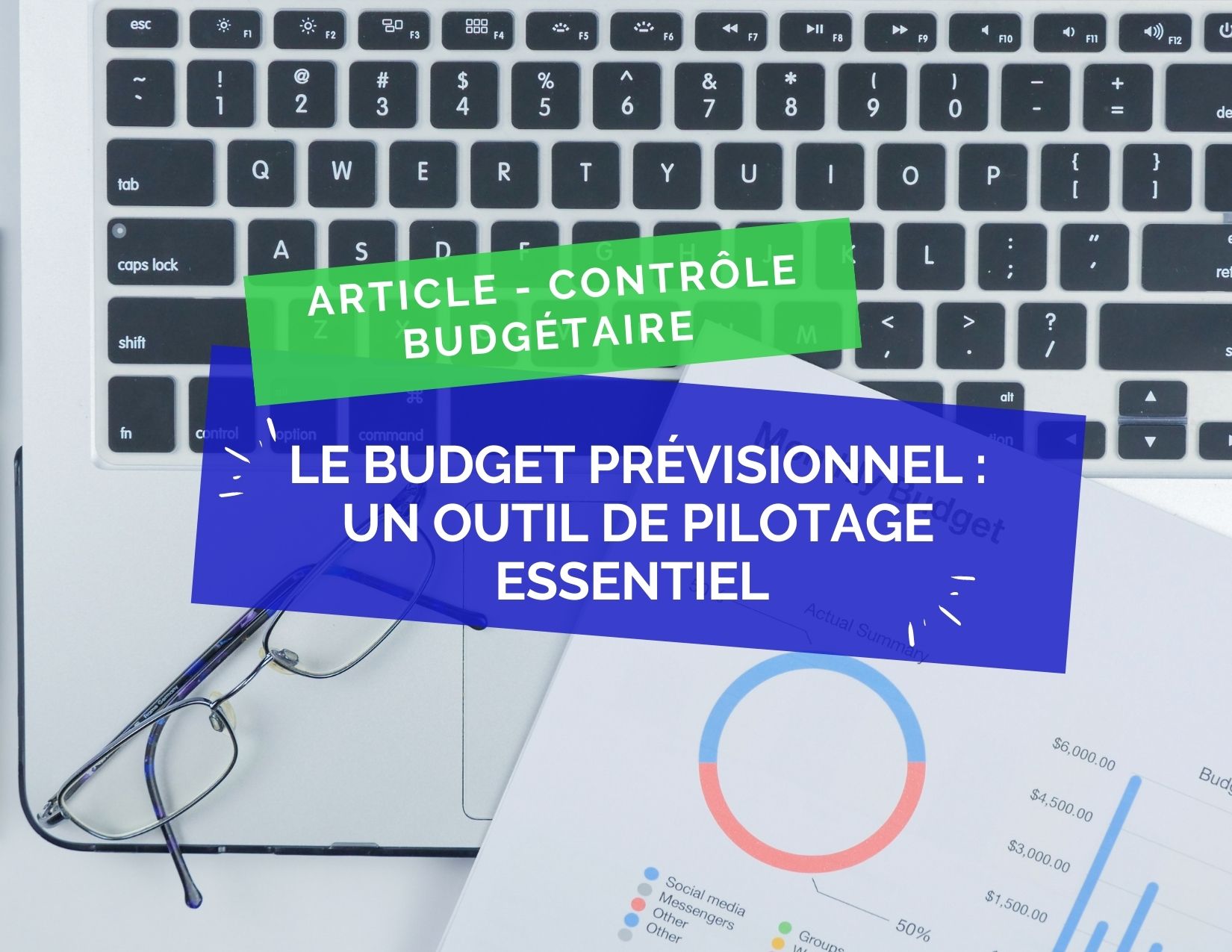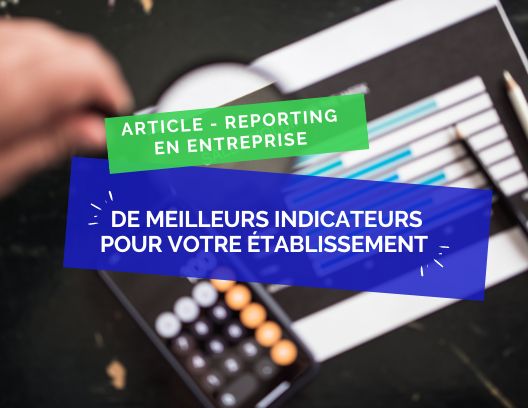Establish a budget forecast
•
Jul 8, 2024
Financial management is essential for any business looking to achieve its long-term financial goals. One of the most important tools for ensuring effective financial management is the budget forecast. A budget forecast is a plan that estimates expected revenues and expenses for a specific period, usually one year. This tool is absolutely essential for helping with planning and, more broadly, for the management of any business.
But what exactly is a budget forecast? How to prepare a budget? In what form? This is what we will address in this article.
The budget forecast: what are the advantages?
What is a budget forecast?
The budget forecast is one of the essential tools for a company's financial management. It is a detailed plan that anticipates future income and expenses over a given period, typically for the coming year.
The budget forecast allows for the planning of financial resource usage and making informed decisions regarding investments, expenses, and income. By preparing a realistic budget forecast, you can anticipate fluctuations in income, expenses, and profits, as well as necessary adjustments to meet your own goals.
This strategic planning tool will be invaluable in helping you maximize your financial resources while making informed management decisions for your business.
Why make a budget forecast?
A budget forecast allows you to track and evaluate the company's financial performance over time by comparing actual results against predetermined objectives. But the benefit of making a budget forecast goes further.
We have selected for you the top 3 advantages of creating this tool.
Advantage #1 : The budget forecast allows you to set objectives
With the budget forecast, you can identify and categorize your sources of expenses as well as your revenues. This gives you a much clearer view of your future cash flow, enabling you to rectify certain points. Your objectives are specific, and you can adjust variables that impact any of your activities. The budget forecast is your guide, your common thread for the year ahead. It is only useful if it is regularly compared with reality. Therefore, it is essential to regularly review it, compare it with what has been achieved, and understand the discrepancies to optimize your management throughout the year.
Advantage #2 : The budget forecast, a tool for measurement, control, and correction
Being able to anticipate all your receipts as well as your disbursements also allows you to foresee challenging periods: depending on the payables and expected revenues, you can control and optimize your cash movements, defer certain deadlines, and reduce your expenses to prevent certain inconveniences that could put you in the red.
Moreover, the budget forecast allows for:
Measuring and controlling your company's income and expenses
Revealing significant discrepancies between income and expenses
Comparing your company's data with sector data (comparisons with past years' data, current data, and the company's long-term objectives…)
Furthermore, the budget forecast allows for making adjustments to objectives and managing the company. Indeed, it allows:
Identifying the most sensitive (internal & external) variables for your business
Identifying trends to adapt objectives
Refining forecasts over time
Advantage #3 : the budget forecast, a tool that adapts to all sectors
No matter the industry, the budget forecast is used everywhere. Hospitality, restaurant, retail, franchise, association… But the stakes differ from one sector to another. For example, in the restaurant and hospitality sector, a manager will need to focus more on economic factors and the seasonality of activities, while in an association, one must anticipate any delays in funding.
How to prepare a budget forecast?
Implementing an effective budget forecast requires following several key steps.
Phase 1 : data collection
First, it is important to gather all relevant financial information, such as current income and expenses, debts, loans, investments, taxes, and other unforeseen expenses.
Phase 2 : setting objectives
Next, you need to determine long-term financial objectives, as well as short-term objectives for the coming year. It is important to develop a realistic plan that takes into account all costs, including variable expenses and unforeseen costs.
Phase 3 : defining resources
The third step is to define the sources of income expected for the coming year, such as salaries, investment profits, and other sources of income. Then, it's time to allocate expenses based on the priorities and financial objectives established earlier.
Phase 4 : analyzing data
Finally, it is essential to regularly monitor results and compare actual expenses and income to the initial forecasts. By adjusting and adapting the budget forecast throughout the year, a company can maximize the use of financial resources and achieve its financial objectives.

What does a budget forecast table look like?
A budget forecast is presented in the form of a summary table that details the expected income and expenses over a given period. This table is generally divided into 2 categories: receipts (incoming money) and disbursements (outgoing money).
The receipts budget consists of:
Receivables from the previous period still to be collected;
Sales including tax from the sales budget, taking into account payment deadlines granted to customers;
Other operations resulting in a receipt.
The disbursements budget consists of:
Debts from the previous period still to be paid
Purchases and other expenses including tax from the purchases budget and other expenses, taking into account the payment deadlines granted by suppliers.
Investments including tax, taking into account the period when the investment is disbursed
The VAT to be paid
Other operations resulting in a disbursement, such as a loan repayment, for example.
The cash budget is a budget that synthesizes receipts and disbursements, allowing you to know the cash position at the end of the month.
Why choose Qotid for your budget forecast?
Qotid is a business intelligence and automated reporting solution tailored for SMEs and multi-entity groups. With Qotid, you can easily create your budget forecast table and manage your business effectively. By choosing Qotid, you ensure real-time monitoring of your activity. In addition, our solution integrates with all your tools to effectively consolidate your data (accounting software, banks, invoicing software, etc.). To learn more, do not hesitate to contact one of our experts.
In summary:
The budget forecast is an essential tool for a company's financial management. It allows for planning the use of financial resources and making informed decisions regarding investments, expenses, and income. A budget forecast also enables tracking and evaluating the financial performance of the company over time by comparing actual results against predetermined objectives. Implementing an effective budget forecast requires following several key steps: data collection, setting objectives, defining resources, and analyzing data. By following these steps, a company can maximize the use of financial resources and achieve its financial objectives.
F.A.Q :
1.What is a budget forecast?
A budget forecast is a detailed plan that anticipates future income and expenses over a given period, typically for the coming year. It allows for planning the use of financial resources and making informed decisions regarding investments, expenses, and income.
2. Why make a budget forecast?
A budget forecast allows for tracking and evaluating the company's financial performance over time by comparing actual results against predetermined objectives. It also helps set objectives, measure and control income and expenses, reveal significant discrepancies between income and expenses, and adapt to all sectors.
3. How to prepare a budget forecast?
Implementing an effective budget forecast requires following several key steps: data collection, setting objectives, defining resources, and analyzing data. It is important to gather all relevant financial information, establish long-term and short-term financial objectives, define sources of income, and allocate expenses based on established priorities and financial objectives. Finally, it is essential to regularly monitor results and compare actual expenses and income to the forecasts.



